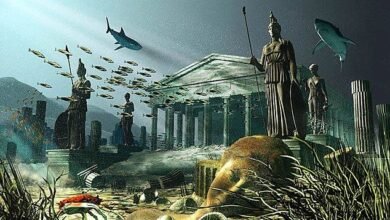
June 30, 2008, marked a significant centenary—exactly 100 years since a cataclysmic event unfolded in the remote Siberian wilderness, forever etching itself into history as the Tunguska event. This enigmatic explosion near the Podkamennaya Tunguska River has continued to captivate the world, sparking debates, theories, and discussions among scientists and researchers. As we reflect on this monumental event, we delve into the details, mysteries, and ongoing investigations surrounding the Tunguska impact.

Fallen trees from the 1908 Tunguska explosion at Tunguska in Siberia. It wasn’t until 1927 that Russian scientists – led by Leonid Kulik – were finally able to get to the scene. Photo via the Soviet Academy of Science/ NASA Science.
The Unforgettable Morning

Photo of an air burst, in this case from a U.S. Navy submarine-launched Tomahawk cruise missile. A similar kind of air burst from an incoming asteroid or comet flattened the trees in Siberia in 1908. Image via Wikimedia Commons/ public domain.
Picture the year 1908, in the heart of Siberia. A tranquil morning is shattered as a blinding flash of light and an earth-shattering explosion rock the landscape. Witnesses describe the ground shaking, trees uprooted, and a searing heat that defies belief. One man sitting on a porch, miles away from ground zero, is hurled from his seat by the shockwave. This was the Tunguska event, an encounter with a cosmic force that left an indelible mark on the region.
The Hunt for Answers
It wasn’t until years later that scientific expeditions were able to reach the desolate Siberian wilderness. Leonid Kulik’s determined efforts finally brought him to the blast site in 1927, where a surreal scene awaited him. An 800-square-mile area of forest had been obliterated, with trees lying in a radial pattern pointing away from the epicenter. But there was no crater—a puzzling detail that would ignite a century of speculation.


60°54′11″N 101°54′35″E
Tunguska Blast Event Area
Deciphering the Clues
The evidence left behind by the Tunguska explosion raised more questions than answers. Trees standing upright but stripped of limbs, a seismic shockwave felt worldwide, and night skies illuminated as far as Asia—these were just a few of the puzzle pieces. Scientists diligently pieced together the clues, unveiling a likely scenario: a massive space rock, approximately 120 feet across, hurtled into Earth’s atmosphere at breakneck speed. The resulting pressure and heat caused the asteroid to disintegrate in a fiery explosion, releasing energy equivalent to 185 Hiroshima bombs.

Chelyabinsk and Tunguska, in relation to the Empire State Building and the Eiffel Tower. Image via Wikimedia Commons/ CC BY-SA 4.0.
Ongoing Discoveries and Future Implications
As technology advanced, scientists gained deeper insights into the Tunguska event. Today, the Near-Earth Object Office at NASA’s Jet Propulsion Laboratory monitors potential cosmic threats and calculates the orbits of asteroids and comets. The Tunguska impact serves as a stark reminder of the potential hazards lurking in space, emphasizing the importance of continued vigilance.

Map showing the approximate location of the Tunguska event of 1908 in Siberia, Russia. Image via Wikimedia Commons/ CC BY-SA 3.0.
A century later, the Tunguska event stands as a testament to the immense power of the cosmos and the enduring curiosity of humanity. The Siberian wilderness may have borne the brunt of the impact, but the ripples of this explosion have echoed through time, inspiring generations of scientists and sparking conversations about the mysteries of our universe.
References:
- Boslough, M., & Crawford, D. (1997). Low‐altitude airbursts and the impact threat. International Journal of Impact Engineering, 20(3), 135-145.
- Kring, D. A. (2007). The Tunguska Mystery 100 Years Later: Lessons Learned from an Impact Event. Elements, 3(1), 41-46.
- Pasechnik, I. P., & Melekestsev, I. V. (1995). Some mechanisms of the Tunguska explosion. Planetary and Space Science, 43(4), 529-532.
- ReVelle, D. O. (1997). The Tunguska Mystery: 90 Years Later. Eos, Transactions American Geophysical Union, 78(34), 361-365.
- Zahnle, K., & Jackson, A. (2004). The case for rainfall during the Tunguska impact. Journal of Atmospheric and Solar-Terrestrial Physics, 66(7-8), 767-779.
Deborah Byrd :
— Sky Observer (@SkyObserve) September 5, 2017
Vapor trail left by the Chelyabinsk meteor, as captured by Flickr user Alex Alishevskikh.
Many people were driving and st… pic.twitter.com/2tT1CIwIfy




